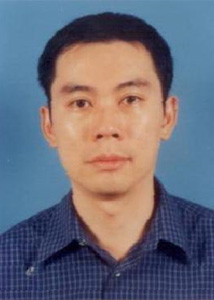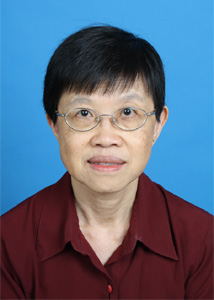Alor Setar Centre
| Phase OneView Centre Details | Phase Two | Phase Three | |||
| Centre: | Alor Setar, Malaysia ( Asia-Pacific ) | ||||
| Principal Investigator: | Dr Keng Hwang Teh | ||||
| Age Groups: | 13-14, 6-7 | Timeframe: | July 2002 to August 2002 | ||
| Sampling Frame: | All government schools in the Kota Setar area of the state of Kedah. Same geographical area for both Phase One and Phase Three | ||||
Personnel
Dr Wee Teik Keng

Medical Officer
Department of Paediatrics,
Hospital Alor Setar
Lebuhraya Darulaman
05250 Alor Setar. Kedah
Malaysia
Roles:
- Phase One collaborator for Alor Setar
- Left Alor Setar and is now: Consultant Clinical Geneticist Head of Department of Genetics Hospital Kuala Lumpur
Dr Azhar Napis

Medical Officer
Department of Paediatrics,
Hospital Alor Setar
Lebuhraya Darulaman
05250 Alor Setar. Kedah
Malaysia
Roles:
- Phase Three collaborator for Alor Setar
- Left Alor Setar and is now: Medical Officer Department of Paediatrics Hospital Sultan Abdul Halim
Dr Chun Khian Tan
Medical Officer
Department of Paediatrics,
Hospital Alor Setar
Lebuhraya Darulaman
05250 Alor Setar. Kedah
Malaysia
Roles:
- Phase Three collaborator for Alor Setar
- Left Alor Setar and is now in private practice as a Paediatrician in Sungai Petani Kedah
Dr Keng Hwang Teh

Consultant Paediatrician and Intensivist
Department of Paediatrics, Hospital Sultanah Bahiyah (formerly Hospital Alor Setar)
Jalan Langgar
05460 Alor Setar. Kedah
Malaysia
Roles:
- Phase One Principal Investigator for Alor Setar
- Phase Three Principal Investigator for Alor Setar
Dr Teik Guan Yew

Medical Officer
Department of Paediatrics,
Hospital Alor Setar
Lebuhraya Darulaman
05250 Alor Setar. Kedah
Malaysia
Roles:
- Phase One collaborator for Alor Setar
- Left Alor Setar and is now: Specialist Paediatrician TK CHHAN Clinic Bandar Seri Begawan Brunei Darussalam.
Why was this centre selected for ISAAC?
I was invited by the national Coordinator, Professor Jessie De Bruyne, to participate in ISAAC. We were really excited as we don’t have much opportunity to participate in such a big study. It was also important to be able to know the prevalence of asthma and allergic disorders from this region which is known as the Rice Bowl of Malaysia and to be able to compare with other parts of Malaysia especially the urban section of the population. Alor Setar, situated in the north western region of the peninsula, has a largely rural population with padi planting as the main occupation and is also predominantly Malay. However there is also a significant population of Chinese and Indian ethnicity.
Our experience of ISAAC
The questionnaires for conducting the survey were translated into the Malay language and Mandarin and this were tested out by Professor Jessie de Bruyne and Professor Quah Ban Seng. The students in the age group of 13-14 years were able to respond to the Malay questionnaire as this is the medium of instruction in the secondary school. As for the primary school children aged 6-7 years where the medium of instruction is mandarin questionnaires were given in that language. Teachers were very helpful in translating for the parents as well.
The initial enthusiasm in conducting the study was a bit dampened as we realized we had to undertake the survey ourselves, having to go to schools using our own transport and some of these schools were rather inaccessible and located right inside the padi fields. Nevertheless the response from everybody was heartwarming and I was very fortunate that my fellow investigators helped lighten the load. And it was a great learning experience.
Getting permission from the State Director of Education to conduct the survey was not difficult. Teachers in the school were obliging and helped arranged for a suitable time and place for the survey and video presentation. Where there was anticipated discipline problem the presence of the discipline teacher helped in maintaining order. With such co operation it is not surprising that the response rate was high.
Acknowledgements
We wish to thank the Ministry of Education, Malaysia for granting permission to perform both phase One and Three surveys among the school children in the Kota Setar district. We are also indebted to all children, parents and school staff who participated in the surveys.
